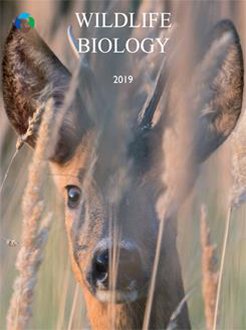The anthropic transformation of the landscape has brought the arrival of novel ecosystems. Since these ecosystems will likely become increasingly common in the future it is important to know if they can provide food for wildlife. Here we test whether European otters Lutra lutra can have high foraging success in human-made reservoirs. Rhythms of daily activity were studied in a small (365 ha) and shallow (6–15 m) reservoir in NW Spain in which otters show diurnal activity and can be observed directly when foraging. We studied time of permanence in the water and fish catch rate during the period in which water levels were kept artificially low (autumn–winter 2015, 2016 and 2017). Results indicate that otters had at least two peaks of diurnal activity (from 10:00 to 11:00 a.m. far from sunrise and from 06:00 to 07:00 p.m. immediately before sunset). Otters spent an average of 74 min (54–94, 95% CI) in the water foraging daily, and had a minimum fish catch rate of ca 600 g h–1 of small fish. According to a pre-existing theoretical model, otters eating at that rate can satisfy their daily energy requirements with just 1.5 h of daily foraging activity, what roughly coincides with the upper confidence limit of the parameter estimate. When considering as well the capture of large fish otters obtained ca 850 g of fish per day in only 1.2 h in the water. Otters in the reservoir satisfy their daily requirements in autumn–winter with the same time investment than Shetland Island otters foraging during the day on marine fish during the summer. This coincidence is most likely due to the fact that winter water temperature in our study site is similar to that in the Shetland Islands in summer.
How to translate text using browser tools
3 October 2019
High foraging efficiency of Eurasian otters in a shallow Iberian reservoir
Ánxela Llinares,
Alejandro Martínez-Abraín,
Juan Veiga

Wildlife Biology
Vol. 2019 • No. 1
2019
Vol. 2019 • No. 1
2019
activity rhythms
diurnal activity
fish catch rate
Lutra lutra
time in the water





